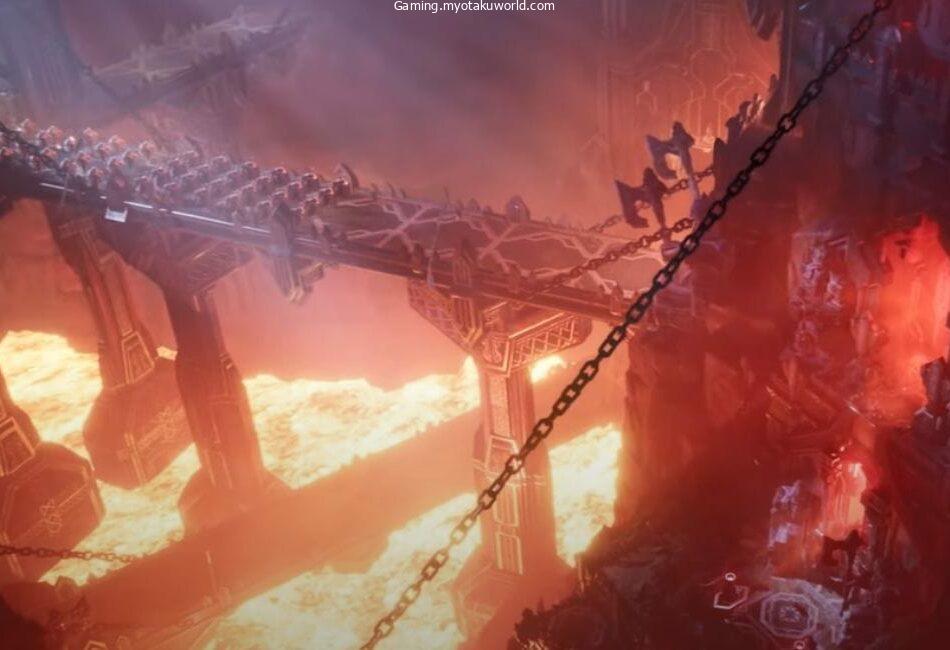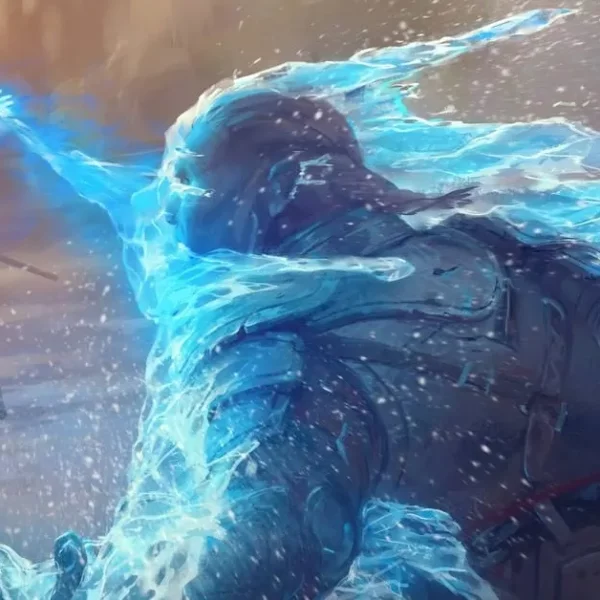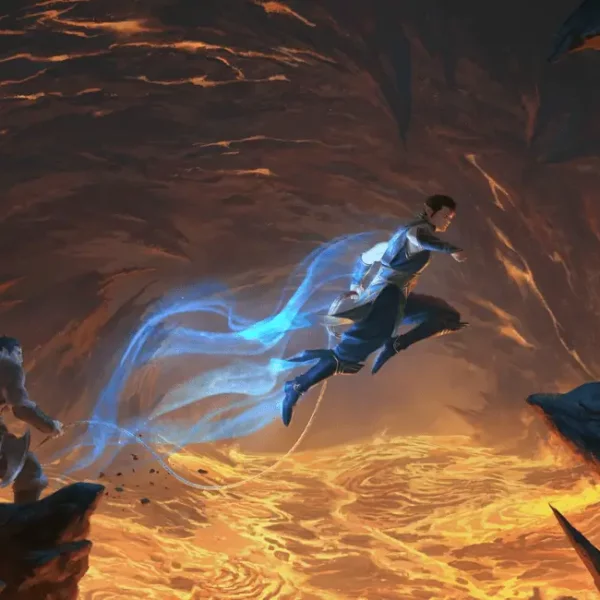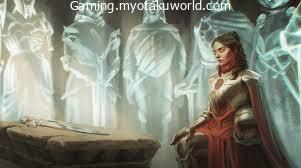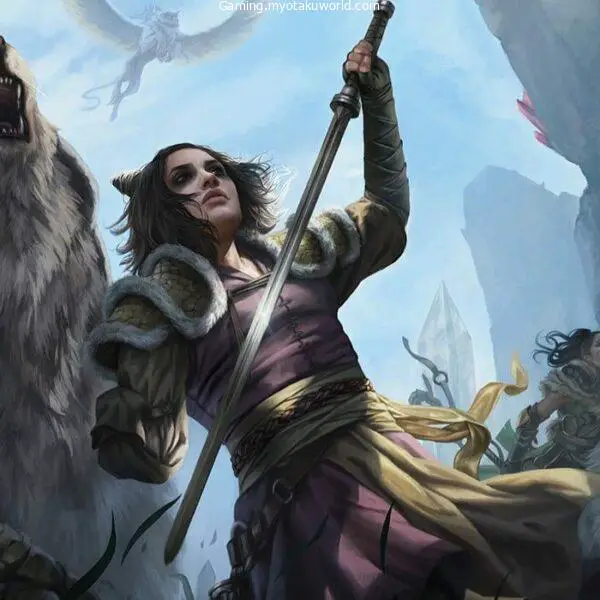Lava has always been a puzzle. Is it solid or liquid?
Maybe something else all together?
In games, lava either kills us right away or does a lot of damage, but how does it work in D&D?
Does it work like fall damage?
Do we even take damage?
Let me explain.
There are a lot of weird and crazy things that happen in D&D. Things like falling from very high places, fighting underground, or getting stuck in a wall.
For new Dungeon Masters (DM), this might be hard to figure out, or they might have trouble finding the exact rule in the DM’s Guide (DMG).
I’ve been a dungeon master for almost a decade, so I know what you’re going through. Join me in this Lava Damage 5e guide to learn about damage to the world and, more specifically, damage caused by lava.
Lava Damage
First, let’s talk about fire, then we’ll talk about other effects and dangers you can put in your game.
Lava is different because it doesn’t say exactly how much damage it does. Instead, the DMG gives players a range of how bad the damage is.
You can decide how much damage this does, but here’s how much damage I think lava should do based on the situation.
| Hand sized Globules splattered on you | 2d10 fire damage |
| Extremity in lava (hand or foot) | 3d10 fire damage per turn in lava |
| Full limb in lava (arm or leg) | 6d10 fire damage per turn in lava |
| Wading through lava (waist high) | 10d10 fire damage per turn in lava |
| Fully submerged in lava | 18d10 fire damage per turn in lava |
This is just an idea, so you don’t have to do it. I will also show you the DMG’s modified damage table. If you want to see the whole list, it starts on page 249 and goes all the way to the end.
| Burned by coals | 1d10 |
| Struck by lightning | 2d10 |
| Stumbling into a vat of acid | 4d10 |
| Wading through a lava stream | 10d10 |
| Being submerged in lava | 18d10 |
| Tumbling into a vortex of fire on the elemental Plane of Fire | 24d10 |
As you can see, they do give a few cases of how lava can cause damage, but it is very rare to swim through lava or dive deep into it.
So, I use the last table to figure out how much damage someone would usually take from lava.
Of course, this wouldn’t be D&D if there weren’t any problems, so let’s take a look at what creatures can make you need lava.
Creatures Found Near Lava
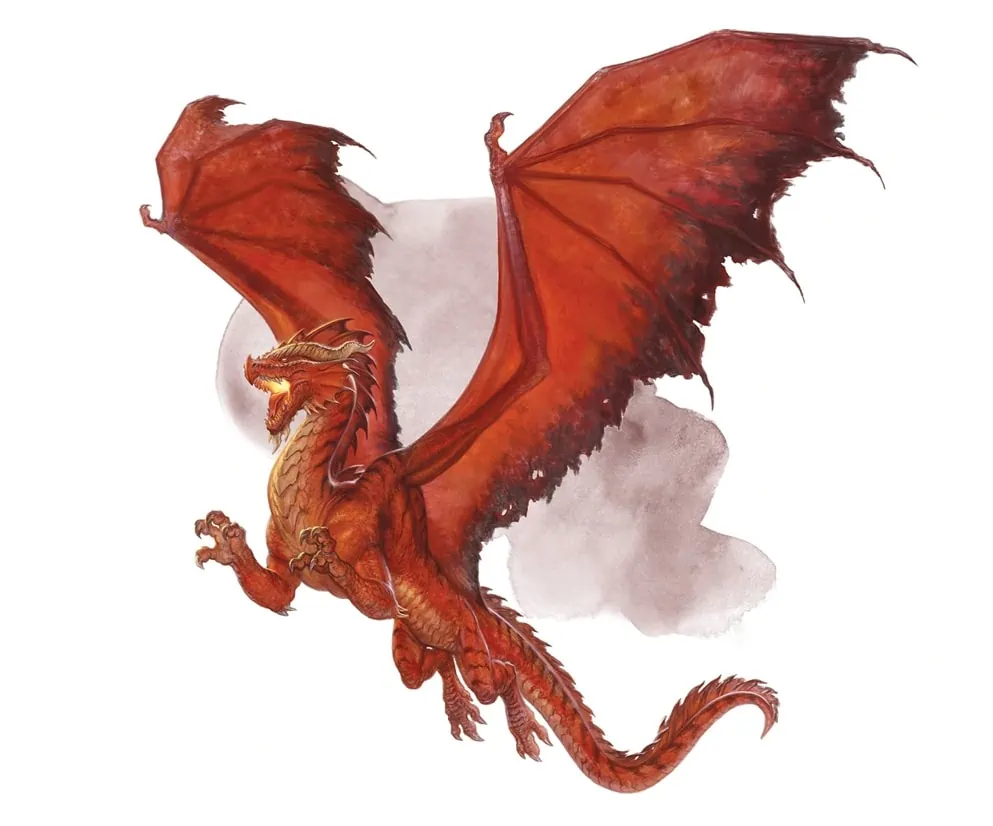
We can split animals into two groups: those that can handle fire and those that can’t. Keeping this in mind, here are a few creatures you might find near fire.
I will add the creature’s challenge rate (CR), which lets you know if a group of four adventurers could beat this creature.
Even though it’s not the most exact, it gives you an idea of whether or not your group is strong enough to fight these creatures.
| Stench Kow | CR ¼ | Fire Resistance |
| Red Guard Drake | CR 2 | Fire Resistance |
| Ghost | CR 4 | Fire Resistance |
| Vrock | CR 6 | Fire Resistance |
| Goristro | CR 17 | Fire Resistance |
| Magmin | CR ½ | Fire Immunity |
| Brass Dragon Wyrmling | CR 1 | Fire Immunity |
| Fire Elemental | CR 5 | Fire Immunity |
| Fire Giant | CR 9 | Fire Immunity |
| Balor | CR 19 | Fire Immunity |
There are a lot of different things that can live in lava-filled places, from dragons to elementals to fiends.
Even the layers of hell can have creatures that can run near lava, whether they are on the material plane or the plane of fire.
Keeping these in mind, you can use them to take advantage of the environment by throwing lava or trying to pull the players into the fire pits.
Maybe the players have to cross a field of volcanoes to get to a temple or wealth that is under hell. There are a lot of ways to use this damage and these creatures as obstacles in a story.
Lava in Real Life
As of the latest news, no one knows how lava feels. All they know is that it is very hot.
People think that since it is made of melting rocks, it is more like syrup and has a semi-liquid state, but they can’t be sure because they would get burned if they tried.
We know for sure that it is crazy hot because Hawaiian volcanoes have been measured to be between 2140° and 2200° Fahrenheit.
People can live in temperatures up to 101.14°F, but lava is well over ten times hotter. So it makes sense to think that normal people will almost quickly melt in the heat if they touch lava.
Keeping this in mind, how do people live in lava? How can some of them almost always be swimming in lava?
Dm’s Interpretation
That’s a good question, and I’ll answer it in this section in the same way I tell my players how to win against what seems like impossible odds.
First, you have to put your doubts aside for now. Most people can do things that people can’t do because of magic, gods, or other things.
Aside from getting fire and heat resistance or immunity, let’s look at how much damage lava does compared to the average health of people.
According to the DMG, wading in fire causes 10d10 or 55 damage on average, while being completely submerged causes 18d10 or 99 damage on average.
At level 20, a wizard or sorcerer with no fire protection and a constitution score of 0 has 82 health points at most.
On the other end, the Barbarian Class has the most hitpoints at level 20 with 142. The other classes have between 103 and 124 hitpoints.
That’s not a lot of hit points, and even worse, if a mage class falls into lava, they will die right away. Even the most tanky class can only last there for two rounds.
So why do people think that characters can swim in fire and fall from crazy heights and still live?
The Math
For one thing, this myth is mostly about the Barbarian and the Fighter, which are known for being tough and having a lot of life.
So let’s imagine they’ve put all of their points into Constitution and have the best health possible. I’ll use the barbarian for this case because he has the most of all the player characters.
With a 20 for constitution, a Manual of Physical Health can raise it to a 22. Then, if you get the Tough Feat, which adds (level x 2) HP, and if you wear a Berserker ax, which adds another (level to HP), and if you are a Hill Dwarf, which adds your level to HP, this is how the math would work out if you rolled a maximum on your HP while leveling up and if you are a Hill Dwarf.
440 max HP = 120 (Constitution) + 240 (Barbarian’s max HP) + 40 (Tough) + 20 (Berserker Axe) + 20 (Dwarf).
Let’s say that the spellcasters in your party work together to help your barbarian with this task. They cast Protection from Energy (Fire), a 9th-level Aid, and Heroes Feast. So, let’s add 40 (Aid) plus 20 (Heroes Feast).
Your Barbarian now has 600 HP and is immune to fire damage. This means that for fire damage, he has double his HP.
Even if he takes 180 damage every round from being in lava, which is the most damage he can take. Here’s how the math works out.
600 (HP) / 90 (immune to fire) = 6.67
He can last for about seven rounds if he is completely buried in lava. This is also based on the assumption that he doesn’t get healed while swimming in lava.
Since around is, on average, six seconds in real time (though this depends on the DM), he can stay alive in the lava for 30 seconds before he needs to get out.
Does that mean lava is weak?
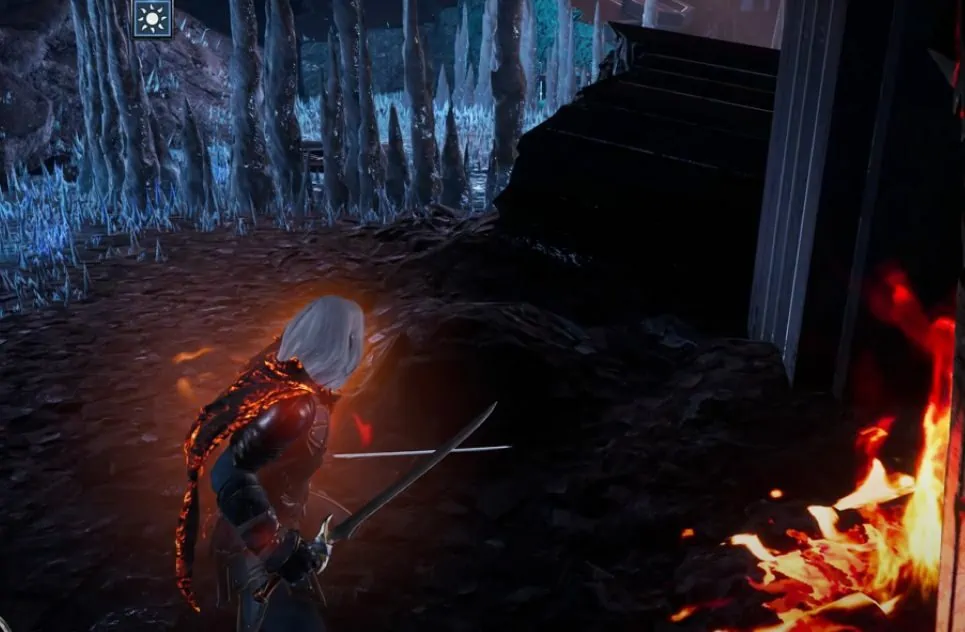
Not even close! A normal villager has 4 HP, so your people are hundreds of times stronger, and lava would kill anyone else.
This doesn’t take into account the heat that comes from the lava, which could also cause damage.
Your players are Heroes or will be when they reach level 20. They are made to do things that humans can’t do. Just look at Hercules and his 13 labors.
I don’t think a normal person could fight a hydra. But if you want to make your world seem more real and fleshed out by adding more environmental risks, check out the next part.
Weather Effects
In D&D, many things happen because of weather or situations that are too bad.
Wandering around in snow or sand storms or exploring underground or inside volcanoes can lead to a lot of bad things for your players, like getting tired from heatstroke or being at a disadvantage because of cold winds.
Because the world is so different, aspiring dungeon masters will eventually find themselves in a situation where they send their players through dangerous places but don’t know how to affect them mechanically there. Here are some (DMG) items that help with that problem.
In Chapter 5 of the DMG, you can learn how to build or roll up a world, as well as how to make dangerous places.
From ones made by people, like caves, to ones made by nature, like weather and places, it has a lot of ideas for roll tables, like places where magic doesn’t work or places where magic fog covers everything.
Since we’re looking for environmental effects, the more thorough and lore-filled version can be found on page 110.
Here is a list of natural effects and how they can be shown mechanically:
Extreme Cold
When moving in places where the temperature is 0° Fahrenheit or lower, creatures that are exposed to the cold must pass a Constitution saving throw with a DC of 10 at the end of every hour or they will get one level more tired.
Creatures that are immune to or have resistance to cold damage simply pass the saving throw, as do creatures that are dressed for cold weather.
At least as lifelike as a video game can get. So make sure you have the right clothes, or you might get cold before the fight even starts.
Extreme Heat
When the temperature is above 100°F, a creature that is out in the heat and doesn’t have access to water must make a Constitution saving throw at the end of each hour or get one level more tired.
For the first hour, the DC is 5, and for each hour after that, it goes up by 1. When making this saving throw, creatures with medium or heavy armor or heavy clothes are at a disadvantage.
Like with extreme cold, creatures that are immune to or have resistance to fire damage immediately pass the saving throw.
This is more realistic than cold because the difficulty keeps going up while you’re there, as if the heatstroke is wearing you down physically.
High Altitude
At 10,000 feet and above, it’s hard for animals that need to breathe. When figuring out how long a creature can move, each hour it spends traveling at a high altitude counts as two hours.
This kind of tiredness lasts longer than the other two. There is no saving throw, but you get tired much more quickly.
Strong Winds
This makes it harder to hit with a long weapon or get a good result on a Wisdom (Perception) check that depends on hearing.
Strong winds put out fires, blow away fog, and make it hard to fly without magic. If there are strong winds, a flying creature must rest at the end of its turn or it will fall.
Strong winds in a desert can cause a sand storm, which makes it harder to see when making Wisdom (Perception) checks.
Strong winds are pretty dangerous, especially when you consider that they can happen when you are already in danger.
Is it possible?
I’d say so, but I’ve never seen a dragon fly through a storm, so I can’t be sure.
Heavy Precipitation
This includes strong snowfall and rain as “precipitation.” Rain makes it hard to see, and creatures in the area have a disadvantage on Wisdom (Perception) checks that rely on sight.
Heavy rain, in particular, puts out fires and makes Wisdom (Perception) checks that rely on hearing harder than usual.
This is the most frequent and least painful effect of the environment.
So why not use this to set the tone for the journey your players will go on?
FAQs
Does lava do fire damage?
Yes, it does. Lava is called fire damage because it is hot and burns. Fall damage, on the other hand, has no damage type.
Does fire resistance work on lava?
Yes, it does. Lava does fire damage, so fire resistance and protection work on the damage done by lava.
Can you walk on lava?
In an ideal world, no. D&D thinks of lava as a liquid, which is why you can be “Submerged” in it. Depending on your DM, water walking could be the same as lava walking, but it would hurt more.
Lava Damage is crazy. It’s one of the few environmental dangers that does direct damage, and it does the second most damage out of all of them.
It also does damage every turn as long as the conditions are met. Even though this was longer than intended, I think that the flavor of D&D comes from the details.
Adventurers, stay safe and keep going.
